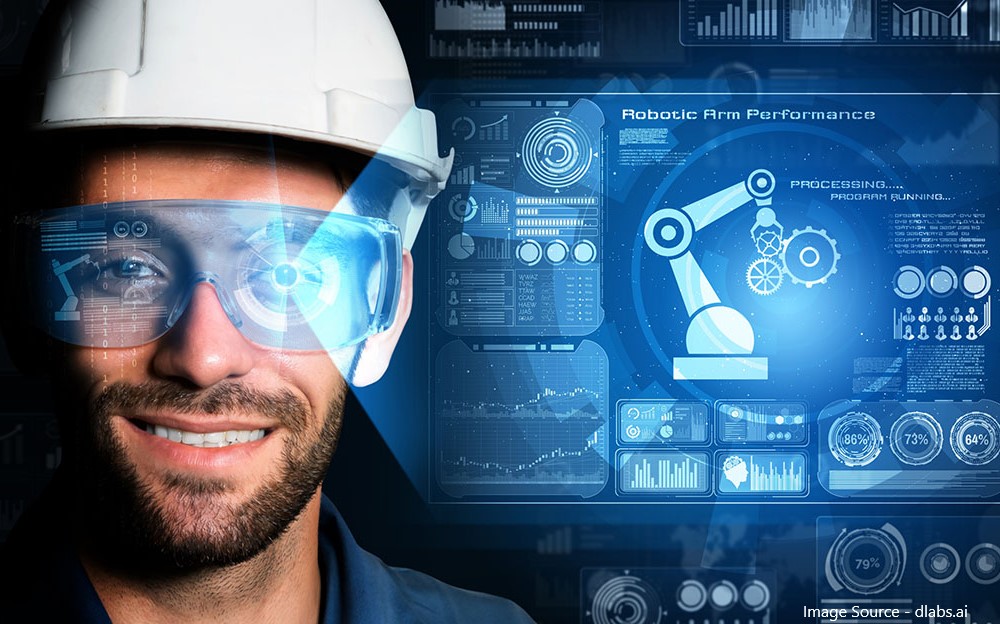
In the dynamic realm of construction, predictive maintenance stands out as a powerful strategy for ensuring the longevity and efficiency of built assets. Yet, the implementation of predictive maintenance in the construction industry is not without its challenges. From data management complexities to operational hurdles, construction companies face numerous obstacles in leveraging predictive maintenance effectively. However, by harnessing the combined capabilities of Artificial Intelligence (AI) and Building Information Modelling (BIM), these challenges can be mitigated, unlocking new possibilities for proactive asset management and enhanced operational performance.
Data management lies at the core of predictive maintenance initiatives, and the construction industry is no exception. Construction projects generate an abundance of data, ranging from design specifications and material properties to equipment performance metrics and maintenance records. Integrating this diverse array of data sources into a unified platform poses a significant challenge. This is where BIM, a digital representation of the physical and functional characteristics of a construction project, plays a crucial role. By serving as a centralized repository for project information, BIM facilitates seamless data integration, providing a holistic view of the built environment.
However, data integration is only the first step. The true value of predictive maintenance lies in its ability to derive actionable insights from data. This is where AI technologies, particularly machine learning algorithms, come into play. By analysing historical maintenance data, equipment performance metrics, and other relevant information, AI algorithms can identify patterns and correlations indicative of potential equipment failures. These insights enable construction companies to adopt a proactive approach to maintenance, addressing issues before they escalate and minimizing downtime.
Moreover, the collaboration between AI and BIM extends beyond data analysis to operationalization. BIM platforms offer a wealth of contextual information about construction projects, including asset geometries, spatial relationships, and maintenance histories. By integrating AI-powered predictive maintenance solutions with BIM, construction companies can create dynamic digital twins – virtual replicas of physical assets enriched with real-time data and predictive insights. These digital twins serve as invaluable decision support tools, enabling construction managers to visualize asset health, anticipate maintenance requirements, and optimize resource allocation.
Furthermore, the integration of AI and BIM facilitates predictive maintenance at scale. Construction projects often involve complex ecosystems of assets distributed across multiple sites. Managing maintenance activities across such expansive environments demands scalable solutions. AI-driven automation tools, coupled with BIM’s standardized data structures, enable construction companies to deploy and manage predictive maintenance strategies seamlessly across diverse project portfolios. From scheduling maintenance tasks to allocating resources efficiently, AI-powered predictive maintenance systems integrated with BIM streamline operations and enhance efficiency at scale.
Additionally, the collaboration between AI and BIM enhances the resilience and adaptability of predictive maintenance strategies in the construction industry. Construction projects are subject to various uncertainties, including fluctuations in weather conditions, environmental factors, and project timelines. Predictive maintenance systems must adapt to these changing dynamics to remain effective. By continuously ingesting real-time data from sensors and IoT devices embedded within construction projects, AI algorithms integrated with BIM platforms can dynamically adjust predictive models, ensuring they remain calibrated to evolving conditions. This adaptive capability enhances the resilience of predictive maintenance strategies, enabling construction companies to respond effectively to unforeseen challenges and optimize maintenance interventions in real time.
The collaboration between AI and BIM presents a transformative approach to addressing the predictive maintenance challenges in the construction industry. By leveraging BIM’s data integration capabilities and AI’s analytical prowess, construction companies can develop robust predictive maintenance solutions capable of maximizing asset uptime, optimizing maintenance resources, and driving operational excellence. As construction practices evolve, the integration of AI and BIM stands poised to revolutionize maintenance practices, paving the way for smarter, more efficient, and more resilient construction projects.
Draftech – Your Project, Our Expertise
Testimonials
Very professional and efficient organization. Delivered a great product to a tight deadline.
ACE Power
Karl and the team are very professional and have a vast knowledge of BIM coordination.
Dwayne Willaims Babinda Electrics
We had multiple large projects with tight deadlines and needed a company we could trust. The teams delivery, attention to detail and understanding of what is being designed is always executed to a high standard.
Martin O’Donovan Envar Engineers
Draftech offered a flexible and reliable approach to working collaboratively with our team. They met our expectations and quality requirements and also offered up new ideas.
Draftech have proven to be a valuable and trustworthy resource and we will continue to work with Draftech on other projects.
Simon Marsden Umow Lai
Draftech is different from others in the professionalism and features they provide.
The ability to walk through projects in real time online provides invaluable insight into problem areas and helps provide an efficient resolution on the spot without many phone calls, emails and the necessity for us to paw through countless drawings to understand the issues.
Todd Morris Manager - Air mech
Draftech were put forward to FIP Electrical as the solution to Coordinate, Model, carry out clash detection, provide Electrical Services Shop Drawings, as built documentation and completed electrical model.
Simon Thorpe FIP Electrical
In close collaboration Draftech set up all our systems and model deliverables. In this process Draftech have proven to be a valuable resource for us and demonstrated commitment, understanding and professionalism.
David Skelley DJCoalition
Draftech’s attention to detail and proactive nature throughout the project assisted us in identifying issues before becoming evident on site, saving us both time and unexpected costs.
Matt Payne PJM Engineering Services
They delivered very high quality Revit models and associated 2D documentation at key milestones, working to a tight budget and in strict accordance with the Architects’ BIM requirements.
Peter Thomas Geoff Hesford
We found Draftech’s work to be of high standard and the team delivered exactly as agreed, in fact, when we considered the project complete, Draftech put further resources into the project as they were not satisfied.
John Johnson Beca
Engaging Draftech during design gave us the tools to make smart decisions.
Hansen Yuncken Design Manager - Michael Harkins
The drafting service is timely, reliable and fit for purpose for the built environment.
Peter Harvey Harvey Industries
Draftech stands apart from other drafting services that we have previously used in their attention to detail and ability to adapt to the individual client’s requirements.
Doug Holt McCaig Aircon
I can confidently recommend Draftech as a solid and reliable supplier, and experts in their field. I look forward to working with them again in the near future.
Chris Behan Norman Disney & Young
After seeing the benefits Draftech provided us on the Townsville Hospital Redevelopment we have set up a relationship with Draftech and intend to continue to use their BIM knowledge and skills for our future projects.
Brad Lund Energy Power Systems
Draftech has no competition as they are in a class of their own.
John Boyes Babinda Electrics
Draftech Developments Drafting and Design Capabilities, in conjunction with their outstanding level of Client service and support has provided great solutions to our engineering and Drafting Design portions within our Gorgon Barrow Island Project.
Aaron Hazelton Applied Electro Systems Pty Ltd
Draftech set up necessary systems and workflows very quickly, but also setup auditable estimating and weekly cost tracking processes that we utilised, requiring little maintenance.
TOM PURDON MPM GROUP




























